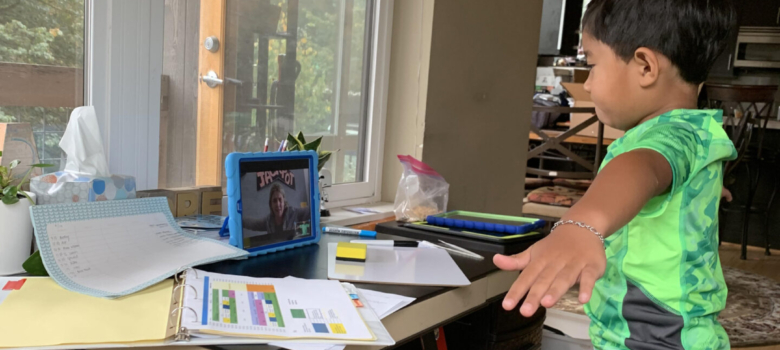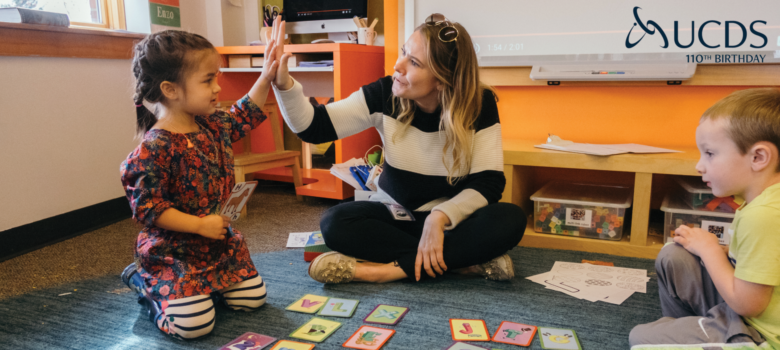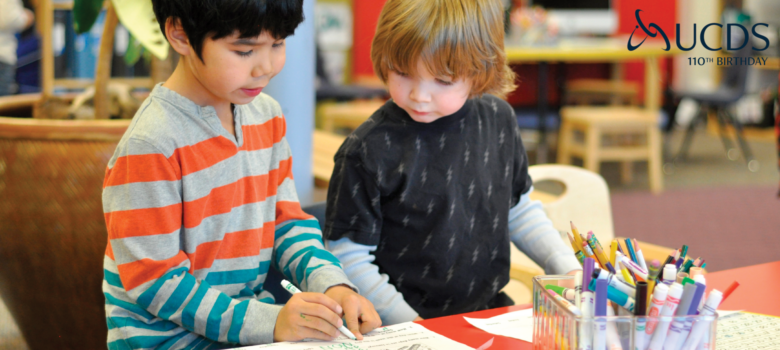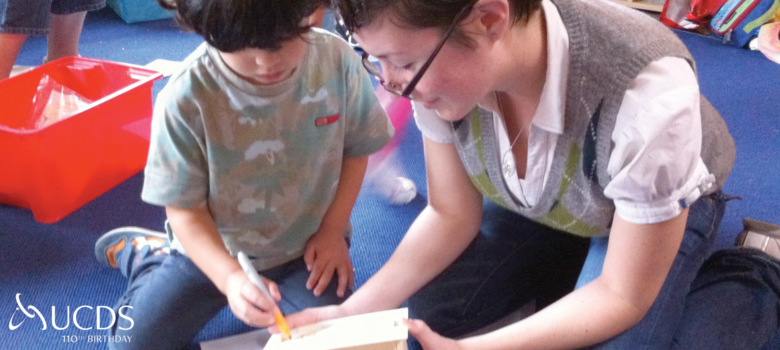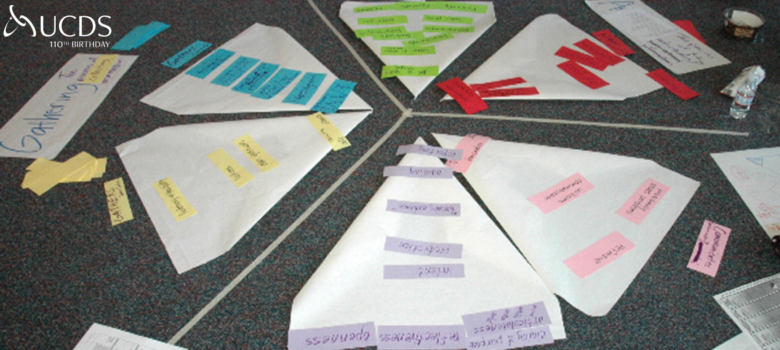by Louise Conway, Learning Support Teacher
While teachers aren’t Occupational Therapists (OTs) by any means, most teachers recognize the importance of considering the physicality of spaces as we are designing experiences for children. As we’re interacting with students in the classroom, we might notice a student frequently looking around the room and having trouble engaging with what’s in front of them. Likely, there is a student (or multiple students) having trouble sitting still—maybe one of those students also struggles to keep their body upright when they are sitting at the rug for circle time, and maybe another child is always on the field during recess putting 100% effort into whatever game they are playing. We’ll of course also notice the students who come in yawning and the students whose papers are covered in doodles. We don’t notice these habits in order to correct them, but because they provide insights into how a child’s body might be affecting their learning.
There are so many different things that a child’s physical presentation gives us clues about and many teachers have a toolkit of strategies that might help each different child engage in learning. The child that is regularly looking up from their work to glance around the room might be hearing a bothersome noise that other children are ignoring. Students who can’t sit still might benefit from a different chair, more frequent movement breaks or maybe even a piece of gum in their mouth.
One of the tricky things about distance learning is that these subtle cues that students might give about how they are feeling and engaging are more difficult to pick up on over video. So, parents, this blog is for you, too.
Over my years of classroom teaching, I’ve worked with several Occupational Therapists who have given me specific advice about how to help certain students engage most successfully with classwork. This advice has been invaluable and almost always very easy to implement. So I reached out to an OT to get a few tips for this new context we find ourselves in.
Robin Huesca, an experienced OT and faculty member at Lake Washington Technical College, started by saying “do not expect kids to sit in front of a screen for more than 10 minutes without a movement and eye break.” She suggested sending students to run up and down the stairs, get a drink of water, or do a few yoga poses. However, she also recognizes that for some students, transitioning away from and back to the computer can be challenging. So, she also gave me some ideas for movement breaks that can happen right in a child’s workspace:
- Hand push/pull — Put your palms together like in the “tree pose.” Push your hands together for 5 to 10 seconds. Then, hook your fingers together, and pull out to the sides.
- Chair sit-ups— Put your hands on the sides of your seat. Lift yourself off the chair by pressing down, and try to hold it for 3-5 seconds.
- Finger count down — Count down from 10 slowly while touching one finger to your thumb as you say each number.
- Have some sensory fidgets available for kids so they can busy their hands even while they are listening to their teacher. Things like putty, or a few Legos, which require a little effort to play with and provide some sensory feedback, can be helpful to try out. Of course, there are always kids for whom fidgets are more distracting and kids who might need to try a few different ones to find something that works for them.
Huesca’s most important advice for teachers is to make sure that students have multiple options to access and demonstrate their learning, something that comes second nature to UCDS teachers in a typical classroom. It’s easy for reading and writing to sneakily become the default modes for engaging in distance learning, which presents an extra challenge to students who are less proficient in these skills. “I have students sending me pictures, videos, whatever they need to do to show me what they have learned.”
When I asked Huesca about any advice she has for parents, she echoed a sentiment we talk about a lot at UCDS – the importance of a partnership between the school and families. “In OT, we talk about a “just right challenge. If you’re seeing new behaviors that you haven’t seen before from your kids, it’s probably because the challenge they have isn’t a just right challenge. If this is happening, talk to your child’s teacher!” The parent-teacher relationship is so important as we work together to make sure that your child is receiving the best education they possibly can. At UCDS, we individualize in everything we do, and we always welcome parents’ perspectives on their children. During remote learning, this is even more important!

